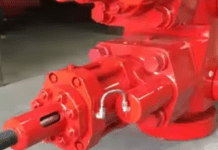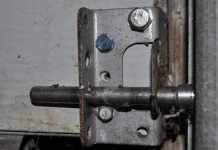Thermoplastics can be made by injection molding. Plastic injection molding can be made from a wide variety of conventional plastics, making material selection problematic. In most cases, thermoplastic refers to a polymer made of plastic. Remelting, shaping it again and refreezing it after it is melted means it may be recycled multiple times.
Plastic injection molding materials come in a variety of forms, each with a specific purpose.
Acrylonitrile Butadiene Styrene (ABS)
The abbreviation ABS stands for Acrylonitrile butadiene styrene, and it refers to the synthetic rubber compound. Pipes, automobiles, and keyboards all use this sort of thermoplastic injection molding material.
For example, ABS has high impact resistance, making it hard to shatter because it is durable and lightweight. It can also resist high temperatures and withstand heat.
However, it has the drawback of being readily scratched, making it a delicate item to work with. Furthermore, because it is derived from oil and produces hot plastic fumes during production, it is extremely harmful to the environment.
High-Density Polyethylene (HDPE)
Plastic bottles, shampoo bottles, toys, recycling bins, and flower pots all use high-density polyethylene (HDPE) as an injection molding material because they are strong, durable thermoplastic. HDPE has the dual advantages of being inexpensive and a strong, high-strength material.
HDPE’s drawbacks include its high flammability and lack of biodegradability, making it difficult to dispose of. On the other hand, high-density polyethylene is unable to be molded and has poor weathering properties.
Low-Density Polyethylene (LDPE)
This is a more pliable and supple substance than HDPE. LDPE injection molding materials are used to make bottles, plastic bags, plastic wrap, playground slides, and other products. Moisture and chemical resistance are two advantages of working with this material. In addition, it is food-grade and low-cost, making it acceptable for use in food products.
Low density also has the drawback of being combustible and having weak temperature capability, making it dangerous to use near a fire. The bonding can be challenging, and the weathering resistance is weak.
Polycarbonate (PC)
Transparent polycarbonate is a robust, durable injection molding material commonly used in engineering. Compact discs, safety hamlets, bulletproof glass, and other electrical and telecommunications equipment contain PC material.
It is virtually uncomfortable to wear as a bulletproof vest, but it is also of good quality. In addition to stain resistance, it can turn yellow with prolonged exposure to UV light. Scratching may also cause it to become inflamed.
In contrast, the UV rays from the sun can damage it and reduce its strength by 70%. In addition, it may catch fire because of the chemical it contains.
Some materials you can use for plastic injection molding are polypropylene, thermoplastic rubber, thermoplastic polyurethane, acrylic poly, Polyoxymethylene (POM), and others.
Final Thoughts
For an accurate production of parts, you need to determine the right materials before starting with the process. This will avoid costly wastage and possible issues that might occur during the production of the parts. Knowledge about the different types of plastic can help you a lot on producing accurate parts.








